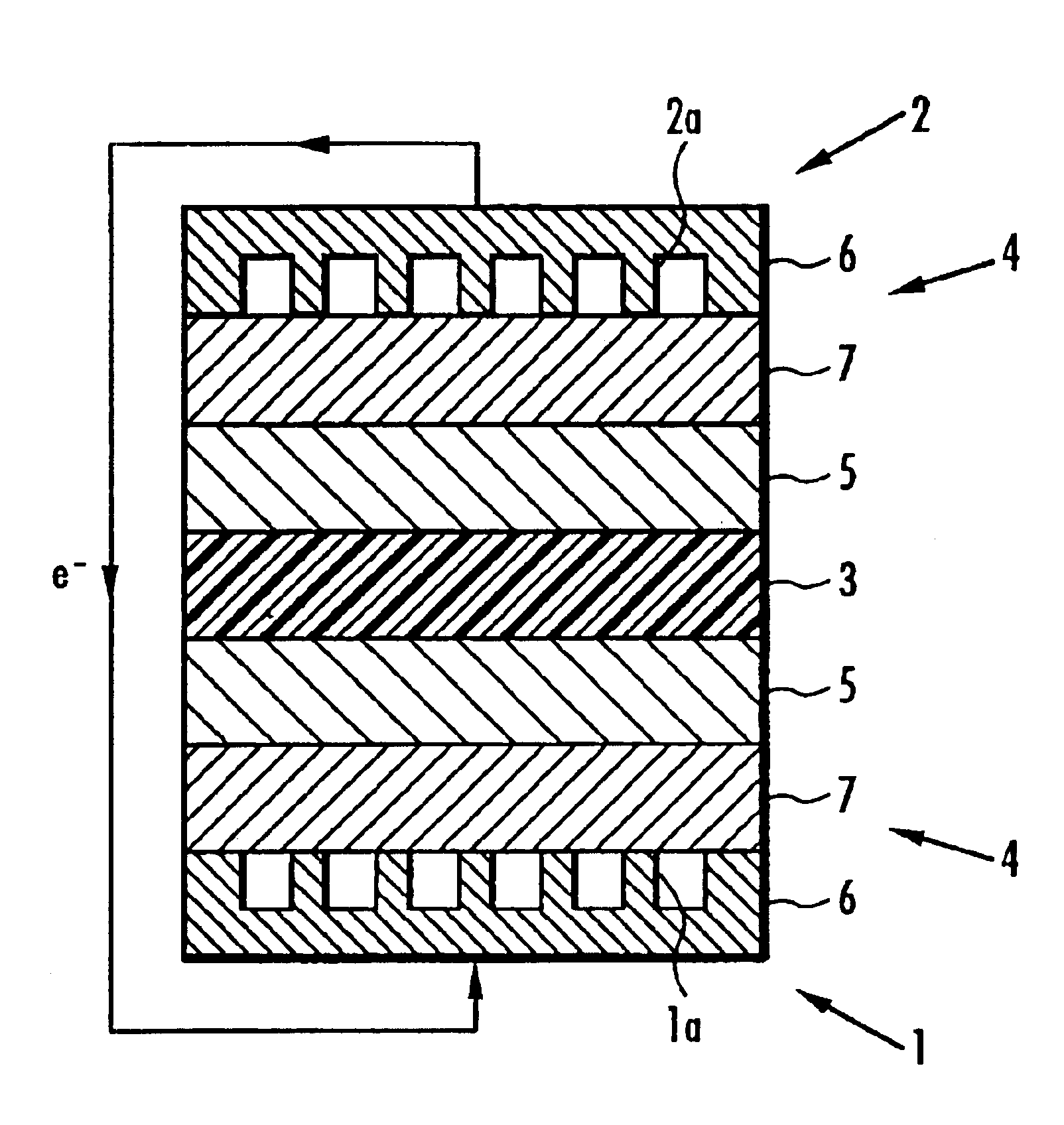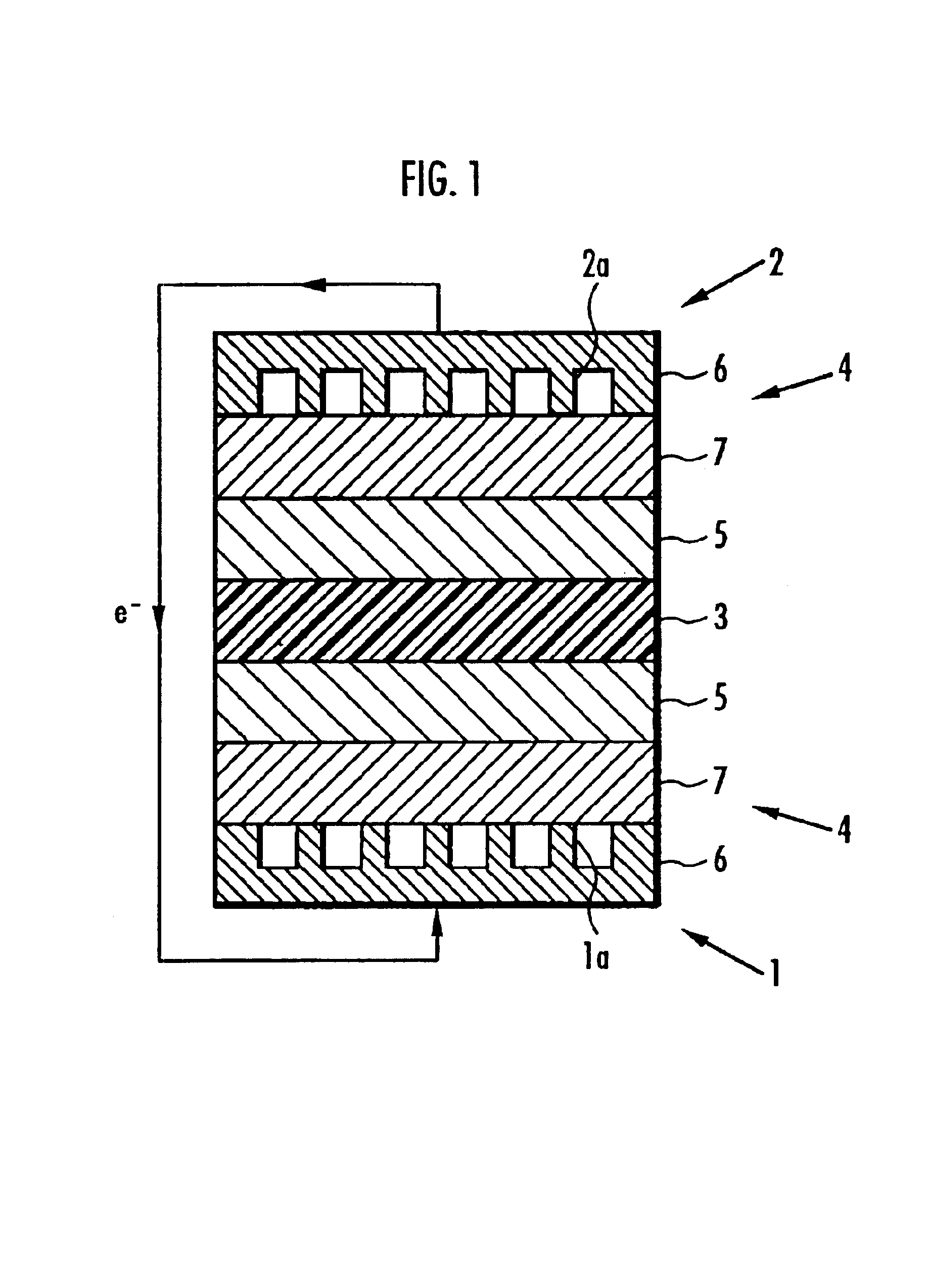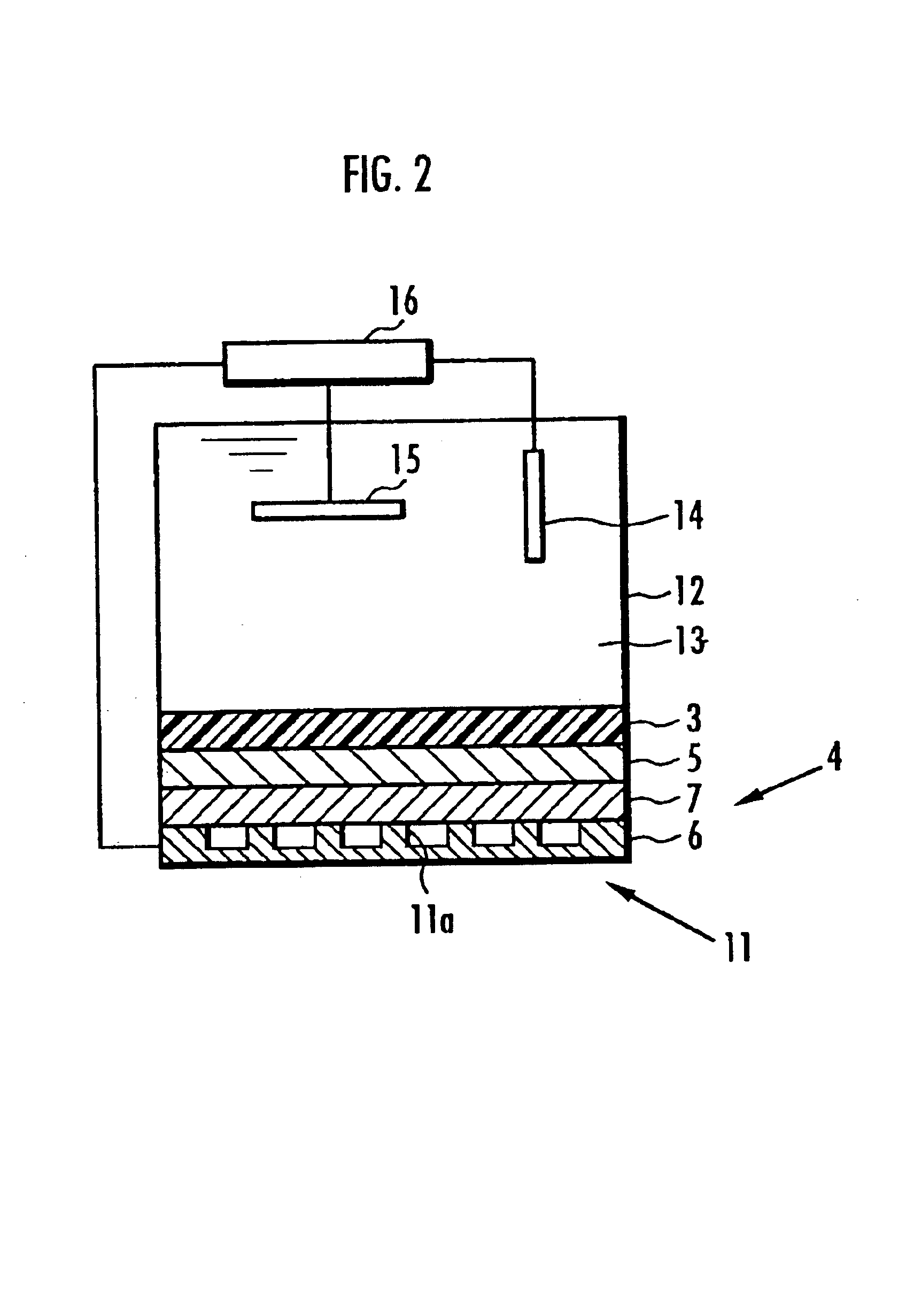Polymer electrolyte membrane and solid polymer electrolyte fuel cell using same
a technology of electrolyte and polymer, which is applied in the direction of non-aqueous electrolyte cells, cell components, sustainable manufacturing/processing, etc., can solve the problems of poor adhesion and achieve the effect of excellent performance in generating electricity
- Summary
- Abstract
- Description
- Claims
- Application Information
AI Technical Summary
Benefits of technology
Problems solved by technology
Method used
Image
Examples
working examples 13-15
[0552]Next, 5-15 mol 4,4′-dichlorobenzophenone as monomer A constituting the first polymer electrolyte was used with 85-95 mol 2,5-dichloro-4-phenoxybenzophenone as monomer B to manufacture composite polymer electrolyte membranes 3 in exactly the same manner as in Working examples 7-12 except that the molar ratio of the constituents of the first polymer electrolyte was varied, and the ratio by weight of the first polymer electrolyte to the second was 85:15.
[0553]Solid polymer electrolyte fuel cells were manufactured in exactly the same manner as in Working Examples 1-6 except for the use of different composite polymer electrolyte membranes 3. The electric charge per unit area of the membrane electrode assembly (Q value), generated potential and resistance to hot water of the solid polymer electrolyte fuel cells employing the composite polymer electrolyte membrane 3 were measured in exactly the same manner as in Working Examples 1-6, and their performance compared. The results are sh...
working examples 16-18
[0556]Next, 2-15 mol 4,4′-bis(4-chlorobenzoyl)diphenylether was used in place of 4,4′-dichlorobenzophenone as monomer A constituting the first polymer electrolyte with 85-98 mol 2,5-dichloro-4-phenoxybenzophenone as monomer B to manufacture composite polymer electrolyte membranes 3 in exactly the same manner as in Working examples 7-12 except that the molar ratio of the constituents of the first polymer electrolyte was varied, and the ratio by weight of the first polymer electrolyte to the second was 85:15.
[0557]Solid polymer electrolyte fuel cells were manufactured in exactly the same manner as in Working examples 1-6 except for the use of different composite polymer electrolyte membranes 3. The electric charge per unit area of the membrane electrode assembly (Q value), generated potential and resistance to hot water of the solid polymer electrolyte fuel cells employing the composite polymer electrolyte membrane 3 were measured in exactly the same manner as in Working examples 1-6,...
working example 19
[0562]To begin with, 4,4′-dichlorobenzophenone as monomer A corresponding to the aromatic compound unit with an electron-attractive group in its principal chain and 2,5-dichloro-4-phenoxybenzophenone as monomer B corresponding to the aromatic compound unit without an electron-attractive group in its principal chain were dissolved in N-methylpyrrolidone in a molar ratio of 1:9. The resultant solution was fed together with a catalyst system comprising sodium iodide, bistriphenylphosphinenickel dichloride, triphenylphosphine and zinc into a three-necked flask which was fitted with a reflux pipe and three-way stopcock, the air within the flask having been replaced with nitrogen. Monomers A and B were heated together inside the three-necked flask in a nitrogen environment within an oil bath at 70° C. to polymerize them. The composition of the catalyst system in relation to the sum total of monomers A and B was 13 mol % sodium iodide, 3 mol % bistriphenylphosphinenickel dichloride, 40 mol...
PUM
| Property | Measurement | Unit |
|---|---|---|
| wt % | aaaaa | aaaaa |
| wt % | aaaaa | aaaaa |
| mol % | aaaaa | aaaaa |
Abstract
Description
Claims
Application Information
 Login to View More
Login to View More - R&D
- Intellectual Property
- Life Sciences
- Materials
- Tech Scout
- Unparalleled Data Quality
- Higher Quality Content
- 60% Fewer Hallucinations
Browse by: Latest US Patents, China's latest patents, Technical Efficacy Thesaurus, Application Domain, Technology Topic, Popular Technical Reports.
© 2025 PatSnap. All rights reserved.Legal|Privacy policy|Modern Slavery Act Transparency Statement|Sitemap|About US| Contact US: help@patsnap.com



